
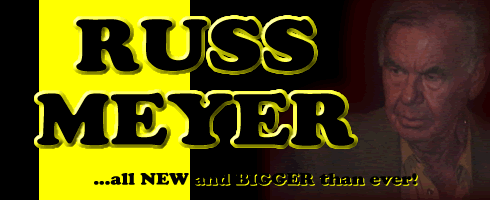


1959 The Immoral Mr.Teas 1961 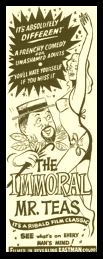 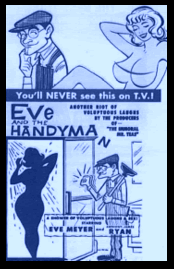 1962 1963 1964 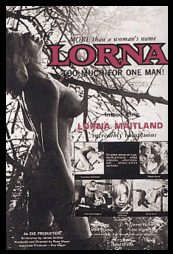 1965 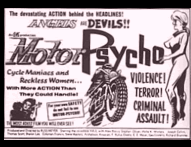 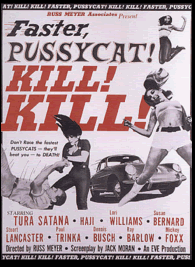 1966 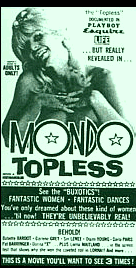
1967 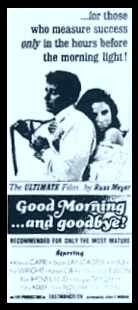 \ \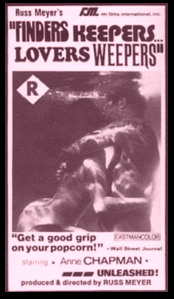 1968 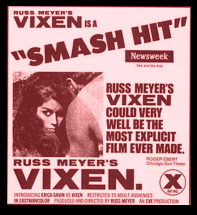 Cherry, Harry& Raquel 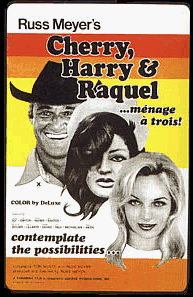 1970 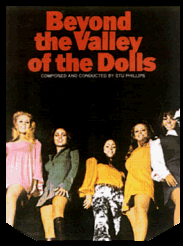 1971 1973 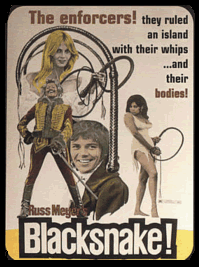 1975 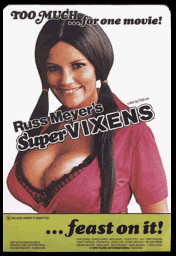 1976 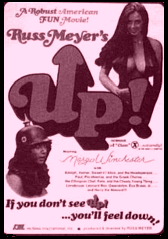 1979 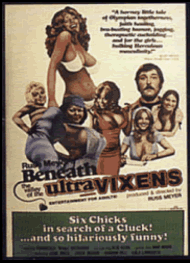 |
by Nathaniel Thompson MEMORIES FROM RUSS MEYER & CAST AT THE EGYPTIAN THEATER, LOS ANGELES, 1999 Ladies and gentlemen, welcome to the world of Russ Meyer. A filmmaker unencumbered by modern society's notionsof what a movie should be. A man for whom no plotline is too extravagant, no action too intense, and no women too top heavy. A raging libidinous font of creativity whose rapid, ingenious editing defined a generation and scandalized the censors. Strap on your seatbelts, folks, and get ready for a wild trip through a filmography which cuts a ragged path through the entire underbelly of American exploitation cinema. And remember...there's always something big about a Russ Meyer movie! Born in San Leandro, California on March21, 1922, Meyer began shooting his own films when he was fourteen years old. His service in World War II turned out to be a growing experiencein many ways; aside from continuing to sharpen his filmmaking skills in and out of the Army, he was also among the soldiers who landed in Normandy during World War II, a time he regards as the most exciting of his life. Itwas during his military tenure in France that he met a guy named Ernest Hemingway, who had a strong influence on Russ' passage into manhood. After the war, Meyer found his camera expertise in high demand; aside from working as a cameraman on such major Hollywood productions as Giant,he also became a freelance photographer for Playboy and other pinup publications, even cutting his teeth on a 1950 short film, The French Peep Show. However, Meyer could not resist the urge to strike out on his own, so he decided to make a movie called The Immoral Mr. Teas. The result became a classic of its kind and made the first of many fortunes for its creator. Today Mr. Teas seems like little more than your average nudie cutie, with its silent title character granted the power to see through clothing and the comical results which follow forming bulk of its one hour running time. Several other soft nudie films followed,the most notable of which, Eve and the Handyman, starred Russ' wife, Eve, who later went on to serve as his right hand on every film until her tragic death in a plane crash. The other lead in thefilm, Jim Ryan, worked on most of Meyer's subsequent projects and even made cameo appearances through the early '70s. About Ryan, Meyer remarks, "He was a great help. Never a problem, never gave me a hassle. Everything he contributed to the films was enormous." In 1963, Meyer hit his next milesto The biker craze was sweeping the nationin the mid-'60s, and Meyer decided to take his stab at this wild fad with Motorpsycho, starring his recurring actress, Haji, in her only true leading role. Alex Rocco, who went on to appear in The Godfather and The Stunt Man, co-starred in this violent drive-instudy of a trio of delinquents whose rampage through the desert starts a deadly cycle of revenge. On Motorpsycho, according to Haji, "the only one with a trailer was Russ and his girlfriend. There were spiders, scorpions, everything. We had one little outhouse and a big barrel on top of four wooden planks for a shower, and it was so cold that you would have to stop and pray before you went in."
At the time, Meyer's next film seemed like little more than a female variation on Motorpsycho, but the results were anything but conventional. Faster, Pussycat! Kill! Kill! is a masterpiece of 1960s filmmaking which, though not a runaway hit at the time, became a huge cult favorite, not surprising since John Haji also returned in this film as Varla's sidekick and possibly lover. "I was dancing in a nightclub, and that's where Russ discovered me. He took five people out there in the desert besides the actors and made a great quality film - the sound, everything. It was amazing. Later I worked on a big production and thought, 'All these people, God, what they all doing here?' It makes no difference how many people you bring onto a film. If you're thinking about becoming a filmmaker, this man should be your inspiration." Despite Meyer's penchant for filling his movies with gorgeous women, he usually avoided mixing business with pleasure. Explains Haji, "He would tell all the leading ladies not to make love the night before shooting because it would show stress in her eyes from being up all night. He took us to the desert because there was no way out! There was nothing you could do!" The third dancer in the film, the gorgeous blonde Lori Williams, held her own against these two exotic beauties. "This was really my first job," Williams explains. "I'd gotten an agent, and he sent me on an interview. Russ didn't want to hire me because he didn't think I had a big enough bust! I said I could use pushups in my bra, which I did. He didn't know whether it would work, but then in rehearsals he finally said okay. I kind of did my part like a cartoon, like the rest of the film, bigger than life." Afterwards Williams demurred from further acting roles, choosing to become a casting director and now working as a real estate broker. However, her place in cinematic history has already been assured. In Following a goofy documentary, MondoTopless, in which Meyer took his narrator fetishism to outrageous extremes, he quickly turned out three modest but interesting films focusing on such subjects as marital fidelity and the human criminal instinct: Good Morning... and Goodbye! ("an honest motion picture which explores the deepest complexities of contemporary life, as applied to love and marriage in these United States" -- with Haji as a forest nymph!), Common Law Cabin, and Finders Keepers, Lovers Weepers, which began his technique for intercutting strange, kinky sex scenes (such as a watery tryst and a chest-shaving) with bizarre unrelated activity (a dermolotion derby, in this case). Or as the ads explained, "Russ Meyer's spirited ruttings happen on pool tables, in showers, in swimming pools... even in bed!" 1968 began the third and perhaps most astonishing phase of his career: the outrageous, Technicolor sex opus. Vixen's tremendous profits caught the eye of the major studios, and 20th Century-Fox soon extended an offer to bring him into the Hollywood fold. However, Meyer managed to crank out one film in between, Cherry, Harry & Raquel. Even Meyer often changes his story about how this film exactly came to be; either he was dissatisfied with it in the editing room, or an entire reel of shot footage was lost. In either case, the narrative was so choppy and incomplete in its initial cut that Meyer filmed some surreal, unrelated snippets of "super abundant" Uschi Digard as "Soul," running around the desert in an Indian headdress, plopping a tuba on her head, and splashing around in a pool. The body of the film concerned a corrupt bordertown sheriff, Harry, waging a drug war against the mysterious Apache. Meanwhile he sleeps with two different women, Cherry and Raquel, who wind up together as Harry finally has a showdown with his nemises. Virtually incomprehensible but filled with action from start to finish, the film remains a prime example of Meyer's brilliant editing technique in the face of seemingly insurmountable odds. As Harry, the square-jawed Charles Napier ("Seven more teeth than Burt Lancaster!," Meyer is prone to quip) makes a solid lead and went on to find favor in Hollywood with the Austin Powers series, Rambo: First Blood Part II, and virtually every Jonathan Demme film. Napier explains, "Working with Russ Meyer was like being in the first wave landing in Normandy during World War II crossed with a weekend in a whorehouse. I'd done an early Star Trek before Cherry, Harry & Raquel, but that was about it. Seeing the movie 28 years later makes me want to go have plastic surgery." At the time Napier was hired, according to Meyer, his views on women were hardly progressive, but a screening of Faster Pussycat convinced him otherwise. "He was so much against women being in charge, as it were, but when he saw this film with women being strong, he thought, maybe there's something to this!"
Sadly, Russ Meyer passed away in 2004. Following his death, his filmic legacy has not been treated respectfully in the DVD era and beyond, to put it mildly. Erica Gavin conducted a fascinating in-depth interview in 2010 with Ian Jane; it's very highly recommended reading. |